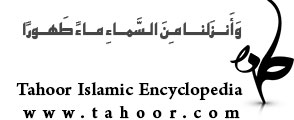
Leaders’ letter, training the Book of creation (in Islamic beliefs)
This book is one of the Mirza Ahmad Äshtiyäni’s works and writings that has been written in Persian. This book includes discussion and subjects on philosophy, “methodology” (osul) and belief.
The author’s brief biography:
Mirza Ahmad Ashtiyäni, the Imamism Shi’te “jurisconsult”(jurist) and philosopher, the fourth and youngest child of Mirza Hasan Mojtahed Äshtiyäni, well-known jurisconsult of Naser Al-Din Shäh and Mozaffar Al-Din#### Shäh Qäjär time, was born in Tehran in 1883A.D. (1300A.H.). After learning the Arabic preliminaries and Persian literature, at the presence of his father studied the preliminary level of “jurisprudence”(fegh), “methodology”(osul) and after his father death in (1901A.D./1319A.H.), continued his studies in the presence of other scholars such as Seyyed Mohammad Yazdi, Mirzä Häshem Rashti, Hakim Kermänshähi and Hakim Eshkevari and then began instructing the “transmitted and rational” (maghool and manghool) in Sepahsälär school. He left for Holy Najaf in 1921 A.D.(1340A.H.) and in addition to benefited from the presence of masters such as Allame Näini and Äghä Ziä’e Aräghi, he also himself instructed the philosophy. He returned to Iran in 1931A.D.(1350A.H.) and spent the rest of his life in Tehran and instructing the jurisprudence, methodology, “rational sciences”(oloom aghli), writing book and guiding the people. Up to end of life he was in charge of Marvi’s theological school, the biggest theological school of Tehran. In addition to “rational and transmitted sciences” (oloom aghli and naghli), Mirza Ahmad, knew about old medicine, old sciences and mathematics. He had beautiful hand writing and composed poetry with pseudonym of “Väle”. He was good-tempered Gnostic, humble, pure-hearted, faithful to religion and super fine example of piety. Mirza Ahamad got permission of Ejtehäd from the authority of that time such as: Mirza Hassan Näini, Hä’eri Yazdi, Äghä Ziyä Al-Din Aräghi, Seyyed Abul Hassan Isfahäni and Häj Äghä Hassan Borujerdi. The result of his marriage was two boys and four daughters. Ayatollah Ashtiyäni after about 80 years teaching and learning, training the people, serving to Islam and Muslims, died at the age of ninety five in 1975/Jun/34 (1354/tir/3 S.H.or 1359/6/14A.H.). He buried in his family tomb in courtyard of Shah Abdol Azime shrine.
The book structure:
This book includes two books which each book includes several “parts” (maghsad) as follows:
* The first book: knowledge of the existing reality and its attributes
-preface: kinds of sciences: natural sciences and supernatural sciences, the subject of sciences and Divine science
-The first “part” (maqsad): “Being” (wujud) and quiddity, existentialism and ideality of quiddity, “revealed arguments” (daläyele naghli) in existentialism
-The second part: Being’s subjects; including 11 subjects
-The third part: the subjects of quiddity: the first subject: the purpose of quiddity and its kinds, the second subject: kinds of unity
-Conclusion: The relation of “created” (hädes) to “eternal” (qadim).
*The second book: “theology” (Divine sciences),
-preface: kinds of people In knowing the realities
-The first part: knowledge of God:
-the first subject: the ways of proving the Creator (including 10 ways),
-the second subject: the characteristics of “the Necessary Being” (väjeb Al-wujud), (including 5 characteristic),
-the third subject: on Divine perfections and their union aspects (including 3 sections” (lam’e).
-The second part: proving the absolute prophethood
-chapter one: proving the principle of prophecy
-chapter two: on prophecy of Mohammad Ibn Abdullah (p.b.u.h.).
-The third part: Imamate
-the first subject: Absolute Imamate
-the second subject: researching of the way of Imam recognizing
-The fourth part: on Resurrection:
-A proof on survival of the all perceiving souls, The condition of spirits in “Lesser Rising” (qiyämat soqrä) and purgatory, Words about “Great Resurrection” (qiyämat kobrä).
Ahmad Ibn Mohammad Hassan Äshtiyäni has written this book for explaining the growth way and reaching to the eternal happiness and in it he has talked about the kinds of sciences, Divine sciences, Being, quiddity, knowledge of God, prophecy, Imamate, and resurrection.
Sources :
Leaders’ letter, training the Book of creation (in Islamic beliefs) by Ahmad Äshtiyäni